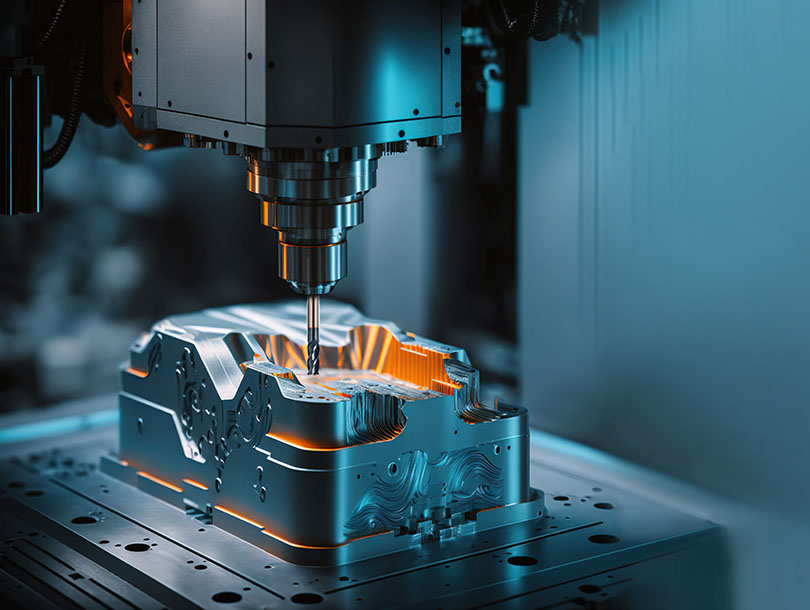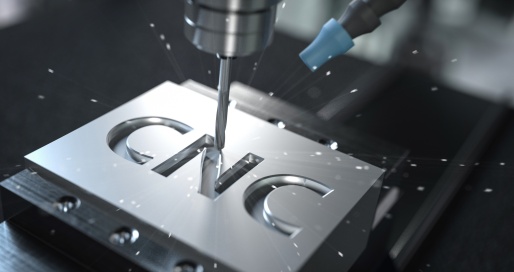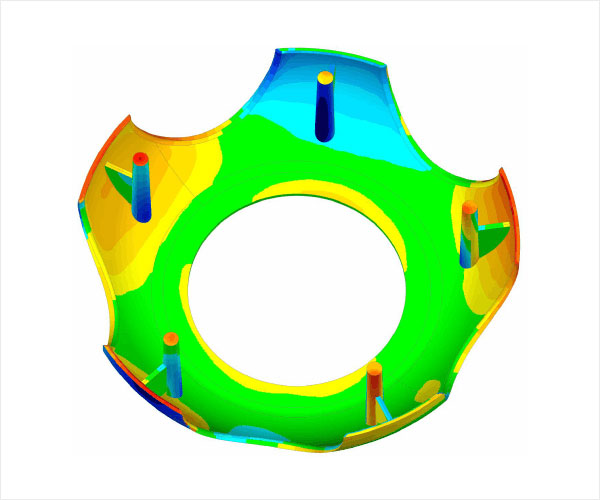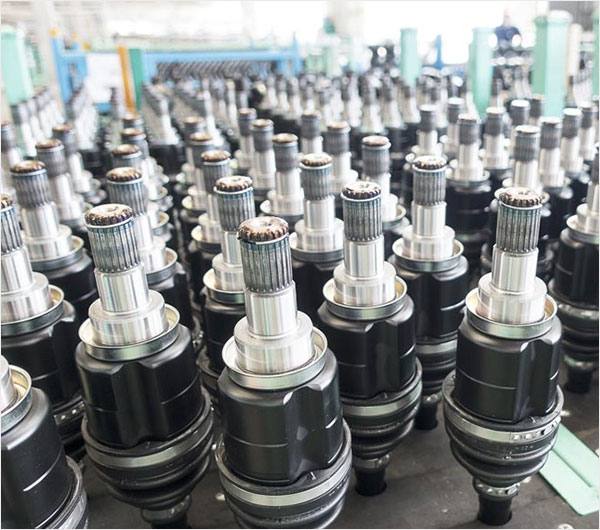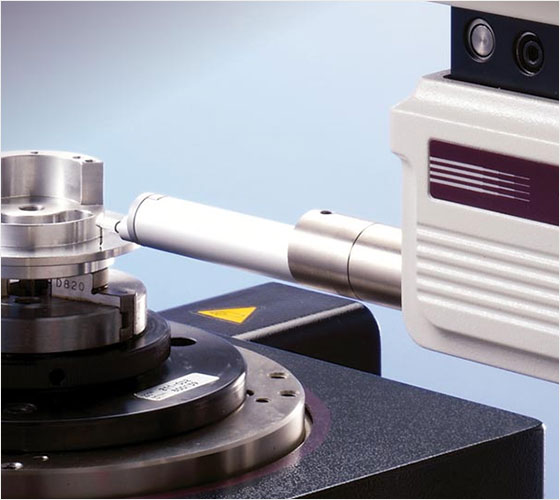Aluminum is one of the most popular materials in CNC machining, known for its versatility, affordability, and excellent mechanical properties. Whether it’s creating parts for the aerospace industry, electronics, automotive components, or consumer goods, aluminum offers a balance of strength, weight, and corrosion resistance that makes it ideal for a wide range of applications. In this blog, we’ll explore the unique qualities of aluminum, the types commonly used in machining, and why it’s a top choice for precision components.
Why Aluminum? The Advantages of This Lightweight Metal
Aluminum’s widespread use in CNC machining can be attributed to its combination of beneficial properties:
- Lightweight and Strong: Aluminum is significantly lighter than steel, yet offers excellent strength-to-weight ratios, making it ideal for applications where weight reduction is critical, such as in aerospace or automotive.
- Corrosion Resistant: Natural oxidation gives aluminum a protective layer that resists rust, adding to its durability and making it suitable for outdoor applications.
- Thermally Conductive: Aluminum has good thermal conductivity, making it useful for heat sinks, electronics housings, and applications where heat dissipation is important.
- Cost-Effective: Compared to other metals, aluminum is more affordable, especially in large volumes, offering good value for high-precision parts.
- Easily Machinable: Aluminum’s softness and malleability allow it to be easily machined at high speeds with minimal wear on cutting tools, resulting in lower production costs and faster turnaround times.
- Recyclable: As a highly recyclable metal, aluminum is an environmentally friendly choice, making it increasingly popular in industries with sustainability initiatives.
Common Aluminum Grades in CNC Machining
Aluminum comes in various grades, each with its own unique properties. The most frequently used alloys in CNC machining are:
- 6061 Aluminum: One of the most versatile and commonly used alloys, 6061 offers a balance of strength, machinability, and weldability. It’s widely used in structural components, automotive parts, and consumer goods.
- 7075 Aluminum: Known for its high strength-to-weight ratio, 7075 is comparable to steel in strength but much lighter. Often found in aerospace and high-stress applications, it’s an excellent choice for parts that need to withstand high loads.
- 5052 Aluminum: Known for its excellent corrosion resistance, 5052 is commonly used in marine and chemical applications. While it’s not as strong as 6061, it’s highly formable, making it ideal for bending and shaping.
- 2024 Aluminum: 2024 offers high strength and fatigue resistance, making it suitable for aerospace applications. However, it’s less corrosion-resistant, so it often requires a protective coating.
- 6082 Aluminum: Similar to 6061 but with slightly higher strength, 6082 is popular in Europe and often used for structural components. It’s known for good weldability and machinability.
Applications of Aluminum in CNC Machining
Aluminum’s adaptability makes it an asset across various industries. Here’s how some sectors benefit from CNC-machined aluminum parts:
- Aerospace: Lightweight aluminum alloys like 7075 are ideal for aircraft frames, engine components, and wing parts, where reducing weight without sacrificing strength is essential.
- Automotive: The automotive industry uses aluminum for engine blocks, transmission cases, and wheels. Its lightweight nature improves fuel efficiency, while its machinability allows for complex shapes and precise tolerances.
- Electronics: Aluminum’s excellent thermal conductivity makes it perfect for heat sinks and housing components in electronic devices, where efficient heat dissipation is crucial.
- Medical Devices: Aluminum’s biocompatibility, combined with its strength and machinability, makes it suitable for parts like MRI machines, surgical instruments, and dental equipment.
- Consumer Products: From laptop casings to bicycle frames, aluminum is a popular material in consumer goods due to its lightweight, corrosion-resistant properties and appealing appearance.
Machining Aluminum: Tips for Achieving Precision and Quality
Aluminum is relatively easy to machine, but specific considerations can help achieve optimal results in CNC machining:
- Choose the Right Tooling: Carbide tools are ideal for aluminum as they resist wear and can operate at high speeds, reducing cycle times.
- Optimize Cutting Speeds and Feeds: Aluminum can be machined at faster speeds compared to harder materials. High speeds combined with the right feed rate help produce a smooth surface finish.
- Use Lubricants or Coolants: To reduce friction and prevent aluminum from sticking to the tool, use a lubricant or coolant to improve surface finish and protect the cutting tool.
- Consider Post-Machining Finishes: For applications that require enhanced aesthetics or corrosion resistance, post-processing techniques such as anodizing, powder coating, or polishing can be applied to aluminum parts.
Challenges and Considerations When Machining Aluminum
While aluminum is generally easy to machine, it presents some unique challenges:
- Chip Management: Due to its softness, aluminum can produce long, stringy chips that may wrap around the tool or clog the machine. Proper chip management systems or high-pressure coolant can help keep chips under control.
- Thermal Expansion: Aluminum expands with heat, which can lead to dimensional inaccuracies in tight-tolerance parts if temperatures fluctuate during machining. Using coolants and adjusting for thermal expansion is essential.
- Material Variability: Different aluminum alloys have different properties, so choosing the right grade for specific requirements is important. Working with a machine shop experienced in aluminum can help you get the best results.
Finishing Options for Aluminum Parts
Aluminum parts often require finishing treatments to enhance their durability, aesthetics, or performance. Common finishes include:
- Anodizing: This process creates a hard, corrosion-resistant layer on the aluminum surface, often available in various colors. Anodizing is popular in industries where appearance and durability are crucial.
- Powder Coating: Powder coating provides a thicker, wear-resistant layer, ideal for parts that need enhanced protection from wear and corrosion.
- Bead Blasting: Bead blasting offers a uniform matte finish, giving the part a clean, aesthetic look while hiding minor machining marks.
- Polishing: Aluminum can be polished to a mirror finish, which is highly desirable in consumer products and aesthetic applications.
Conclusion
Aluminum’s unique balance of lightweight strength, corrosion resistance, and affordability makes it an invaluable material in CNC machining. It supports high-quality production across diverse industries, from aerospace to consumer electronics. With proper material selection, machining techniques, and finishing options, aluminum can be machined into highly durable, attractive, and precise components that meet demanding application requirements.
For any business looking to produce reliable, high-performance parts, partnering with an experienced CNC machining service with expertise in aluminum processing is essential. Aluminum’s versatility, combined with precision CNC techniques, can help bring complex, high-quality designs to life in cost-effective ways.



